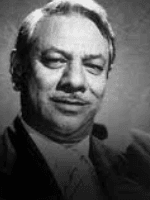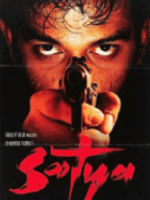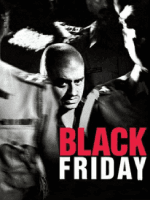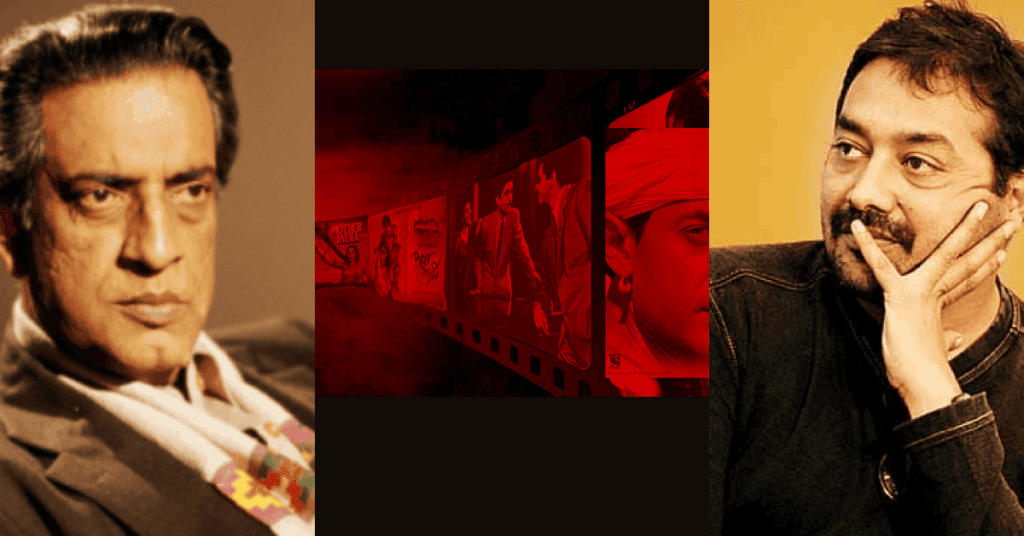The evolution of Indian cinema has never been a singular, monolithic entity. It has constantly evolved, shaped by the vision of filmmakers who dared to break conventions. From the poetic realism of Satyajit Ray films to the anarchic, genre-defying Anurag Kashyap movies, this evolution reflects the changing social, political, and artistic landscape of India.
Satyajit Ray revolutionized Indian parallel cinema in the 1950s with deeply humanist and neorealistic storytelling, offering a stark contrast to the song-and-dance spectacle of mainstream Bollywood. Decades later, Anurag Kashyap led a new cinematic rebellion, crafting raw, unfiltered narratives that explored the dark underbelly of urban India. While Ray’s films were meditative and lyrical, Kashyap’s are visceral and confrontational, yet both directors left a lasting impact on Indian cinema. This journey, from Ray’s introspective, slow-burning narratives to Kashyap’s energetic, fragmented storytelling, captures not just the evolution of filmmaking techniques but also the shifting consciousness of Indian audiences.
The Birth of Indian Parallel Cinema

In the 1950s, Indian cinema was largely dominated by Bollywood’s melodramatic and musical storytelling, heavily influenced by theatrical performances and mythological narratives. The industry was centered around grand spectacles, exaggerated emotions, and song-dance routines, with filmmakers like Mehboob Khan (Mother India) and Guru Dutt (Pyaasa) creating films that blended artistic depth with mainstream appeal. However, Satyajit Ray introduced a new wave of filmmaking akin to Italian Neorealism.
 Ray’s cinema was deeply rooted in realism. His debut, Pather Panchali (1955), showcased rural life with poetic simplicity, marking a departure from mainstream Bollywood’s theatrical performances and elaborate song sequences. Unlike his contemporaries, Ray used silence, lingering shots, and natural settings to create immersive storytelling. His minimalistic approach in films like Charulata (1964) and Jalsaghar (1958) demonstrated that cinema could be introspective, deeply personal, and socially relevant.
Ray’s cinema was deeply rooted in realism. His debut, Pather Panchali (1955), showcased rural life with poetic simplicity, marking a departure from mainstream Bollywood’s theatrical performances and elaborate song sequences. Unlike his contemporaries, Ray used silence, lingering shots, and natural settings to create immersive storytelling. His minimalistic approach in films like Charulata (1964) and Jalsaghar (1958) demonstrated that cinema could be introspective, deeply personal, and socially relevant.
The Transition from Art to Experimentation

The decades following Ray saw a tug-of-war between Indian parallel cinema and commercial Bollywood. The 1970s and 1980s witnessed the rise of “middle cinema” through filmmakers like Hrishikesh Mukherjee (Anand, Chupke Chupke) and Govind Nihalani (Ardh Satya) who crafted films that balanced realism with entertainment. Meanwhile, commercial cinema was dominated by larger-than-life narratives and star-driven spectacles. Amitabh Bachchan’s angry young man persona in films like Deewar and Sholay overshadowed Indian indie films and their more nuanced storytelling.
 However, by the late 90s and early 2000s, a shift began to emerge. Ram Gopal Verma redefined the Indian cinema by bringing back gritty realism with films like Satya (1998) and Company (2002). These films, inspired by real-life crime, showcased urban decay and the underbelly of Indian society, leading to a resurgence of grounded narratives.
However, by the late 90s and early 2000s, a shift began to emerge. Ram Gopal Verma redefined the Indian cinema by bringing back gritty realism with films like Satya (1998) and Company (2002). These films, inspired by real-life crime, showcased urban decay and the underbelly of Indian society, leading to a resurgence of grounded narratives.
The Rise of Indian Indie Films and Anurag Kashyap
If Satyajit Ray films were about poetic realism, Anurag Kashyap movies are about chaos, rebellion, and the raw underbelly of society. Kashyap, often compared to Quentin Tarantino and Martin Scorsese in terms of grittiness and approach, brought an unfiltered, unapologetic style to Indian films.
 His breakthrough film, Black Friday (2004), a hard-hitting account of the 1993 Mumbai bomb blasts, was banned for years before finally getting a release. Kashyap’s films embraced non-linear narratives, unpolished dialogues, and unconventional characters. Dev.D (2009) reinvented Devdas (by Sharat Chandra Chattopadhyay) into a psychedelic, contemporary tragedy, while Gangs of Wasseypur (2012) transformed crime cinema with its sprawling, multi-generational revenge saga. His films shattered Bollywood’s conventional storytelling by rejecting formulaic song sequences and predictable endings, influencing mainstream filmmakers to take risks with narratives, character development, and visual storytelling.
His breakthrough film, Black Friday (2004), a hard-hitting account of the 1993 Mumbai bomb blasts, was banned for years before finally getting a release. Kashyap’s films embraced non-linear narratives, unpolished dialogues, and unconventional characters. Dev.D (2009) reinvented Devdas (by Sharat Chandra Chattopadhyay) into a psychedelic, contemporary tragedy, while Gangs of Wasseypur (2012) transformed crime cinema with its sprawling, multi-generational revenge saga. His films shattered Bollywood’s conventional storytelling by rejecting formulaic song sequences and predictable endings, influencing mainstream filmmakers to take risks with narratives, character development, and visual storytelling.
Kashyap’s success paved the way for independent filmmakers like Neeraj Ghaywan (Masaan), Vikramaditya Motwane (Udaan), and Rima Das (Village Rockstars). His work also influenced mainstream Bollywood, making it more open to experimental narratives and bold storytelling choices.
What Lies Ahead for The Evolution of Indian Cinema
Today, the Indian cinema exists at a fascinating crossroads. The legacy of Satyajit Ray films lives on in filmmakers like Shoojit Sircar (Piku, October), while Anurag Kashyap inspire the rise of new-age indie films. With the growth of streaming platforms, Indian films are experiencing another shift. OTT platforms have democratized storytelling, allowing unconventional films to find a global audience. Films that once struggled for theatrical releases now thrive in the digital space. At the same time, Indian films are receiving increasing recognition at international film festivals, with works like The Lunchbox, The Disciple, and All We Imagine as Light earning global acclaim.
The journey from Ray to Kashyap is a testament to the evolution of Indian cinema, proving that filmmakers have continuously pushed boundaries, embracing both tradition and innovation. Ray’s cinema laid the groundwork for artistic storytelling, while Kashyap’s work shattered norms, showing that Indian cinema could be as daring and experimental as any in the world.
As Indian cinema move forward, they carry the DNA of both Ray and Kashyap—balancing artistry with rebellion, subtlety with intensity. With new voices emerging and platforms expanding, the future promises to be as dynamic and unpredictable as the evolution that brought us here. One thing remains certain: cinema’s ability to reflect, challenge, and shape the ever-changing Indian narrative.

